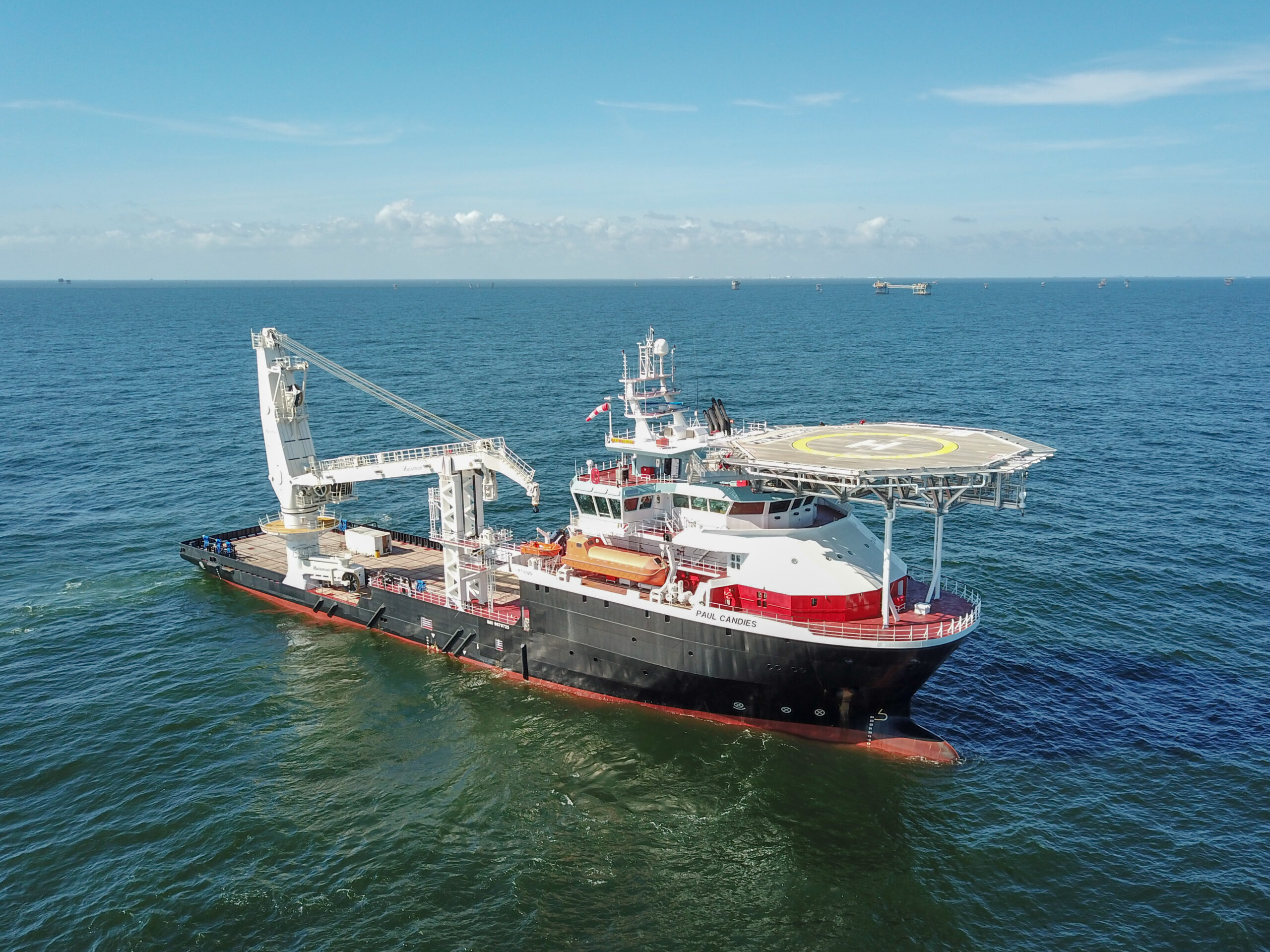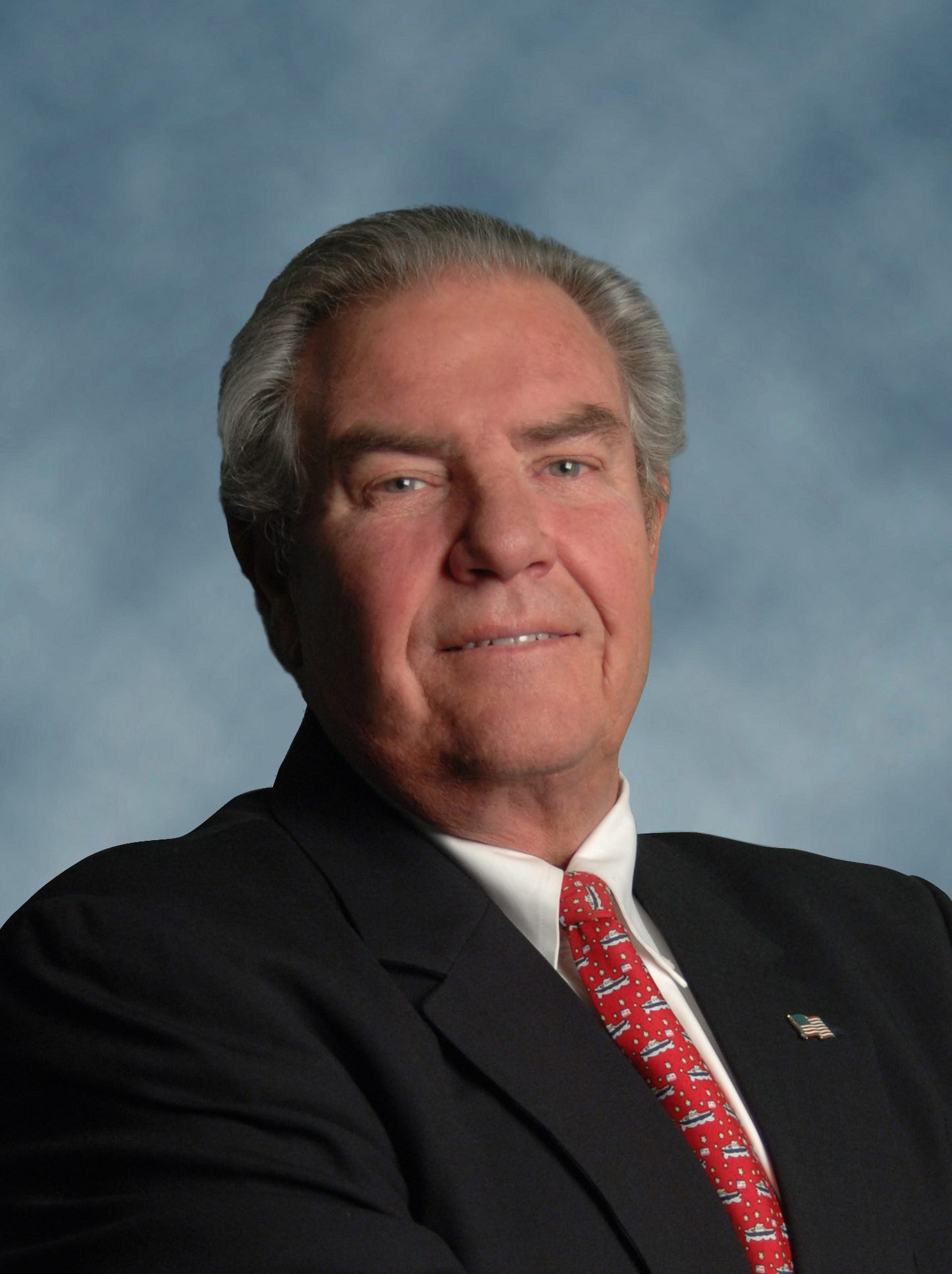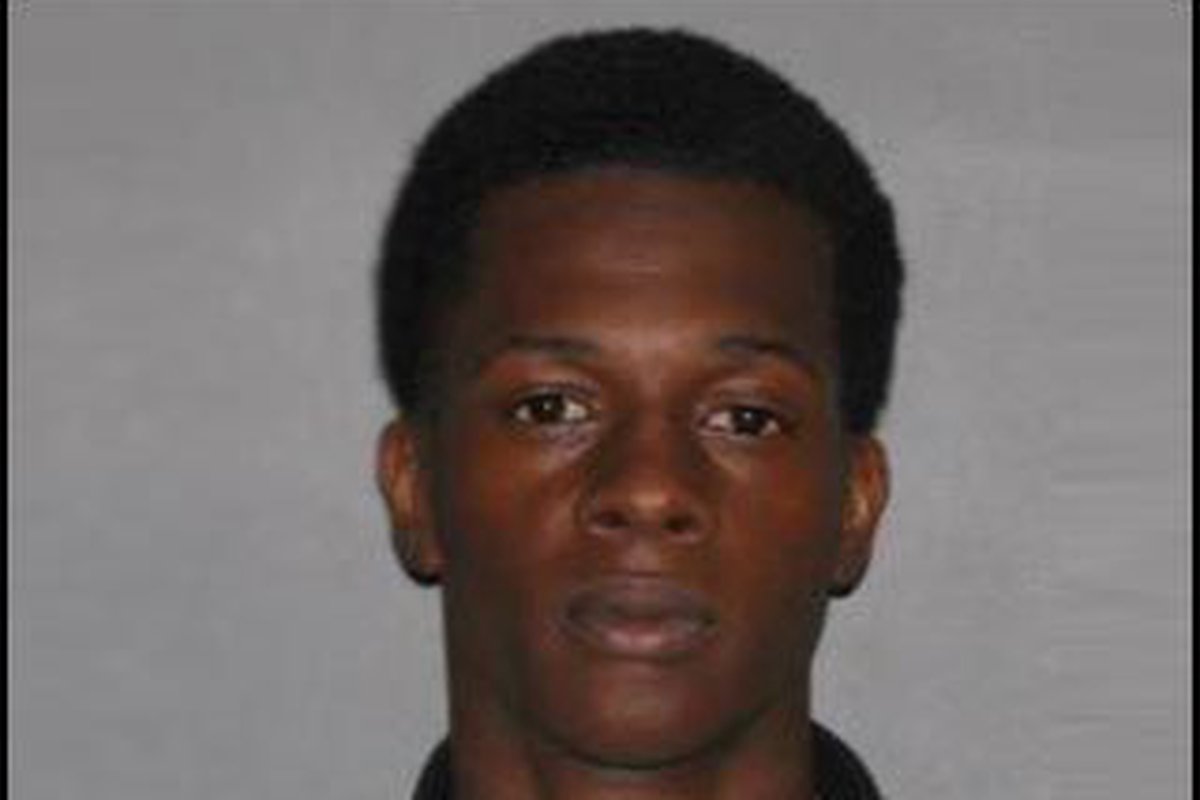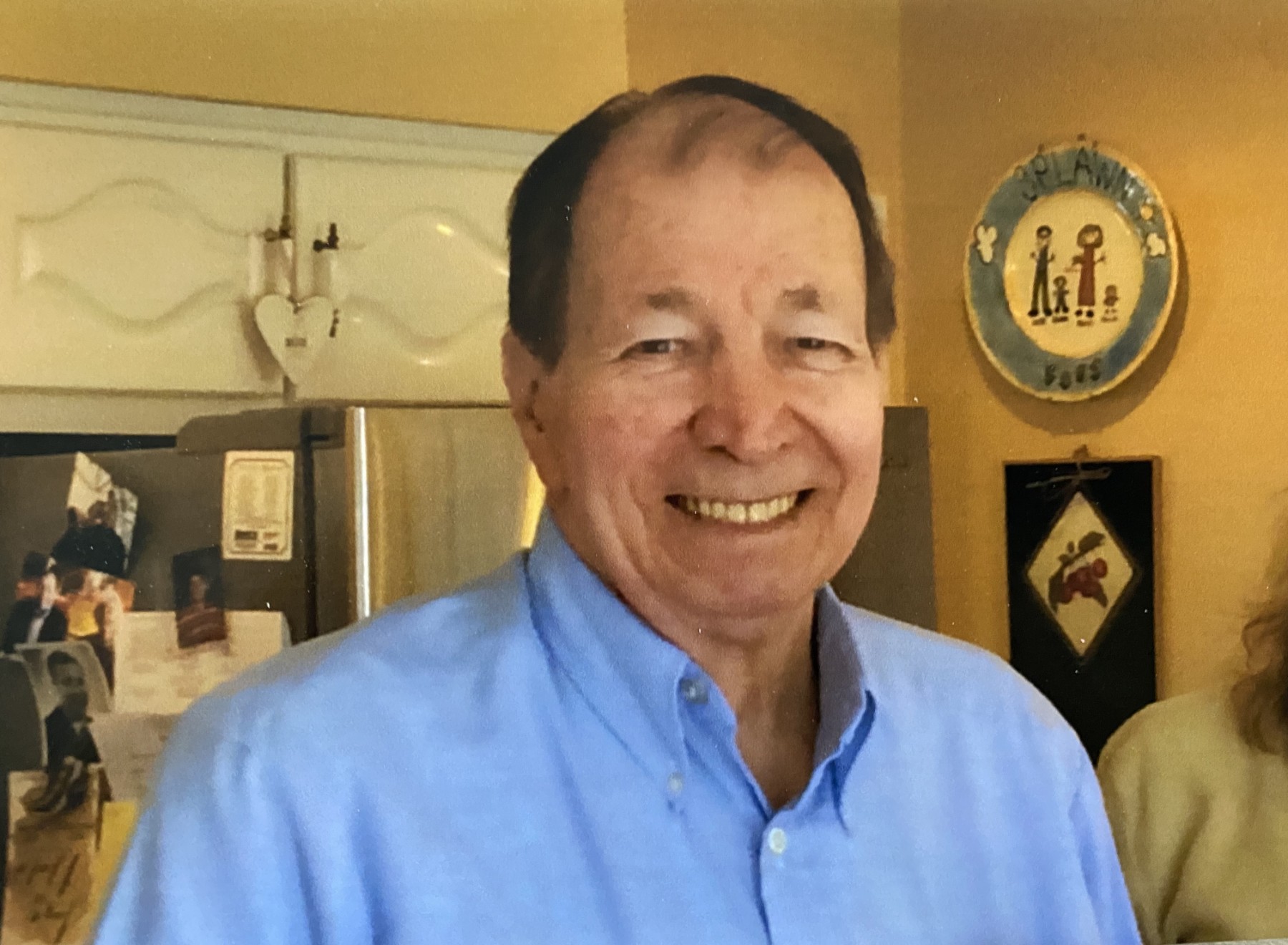NHRA – National Hot Rod Association
To some folks, Paul Candies was “just” the wallet behind the fabulously successful Candies & Hughes race teams that terrorized the strip for four decades. Leonard Hughes was the tuning mastermind, and guys like Mark Oswald, Richard Tharp, Dave Settles, and Leroy Goldstein were the capable wheelmen who got the job done and hoisted the trophies at day’s end. But reading the outpouring of love and respect on numerous message-board postings the last few days, it’s clear that he was way more than that.
Through it all, I always pictured Candies as the conscience of the team, the true Southern gentleman who did not flaunt his considerable wealth yet knew how to use it in a beneficent way. I can just as easily picture him in a tuxedo (white, for some reason, with tails) at some fancy affair as I can a polo shirt and a ball cap, sweating with the rest of us in the pits in Englishtown. Our paths crossed numerous times during the course of working a race, but Hughes was the guy we interviewed for the mechanical details and the driver for his thoughts about the race, and Paul was the guy we BS’ed with while waiting for a chance to talk to his teammates. In the last few years, I probably got to spend more time with him at the track than in all of his racing years because he would frequently come to the media center to hang out and catch up with longtime pals like Dave Densmore, and he was a semi-regular at the Hot Rod Reunions.
I had just spoken to him recently – maybe it was Gainesville or Houston – and told him he and I needed to have a long, sit-down chat about the Candies & Hughes story, but, alas, it will never happen now, so I’ll tell his story through what I know and the kind contributions of those who knew him.
The Sidney Candies
Most everyone knows that the Candies family made its fortune in marine transportation, most notably in tugboats. Otto B. Candies founded Otto Candies in 1942, and Paul, his son, was its current president and COO, leading the business with his brothers, Otto Jr. and Kevin, and it remains a family business; you only have to look at this org chart to see that. Many of the ships in the fleet were named after members of the family, including the 131-foot Paul Candies, built in 1986. (Candies was known to many by his nickname, “Tugboat.”) The company has a number of impressive accomplishments, from being the first to deliver a complete production package from Houston to a North Sea oil field to transporting a Saturn rocket to Cape Canaveral to transporting an entire refinery from Houston to Puerto Rico – 6,000 tons of equipment – in a process that took 72 weeks to complete.
Candies joked to National Dragster in a 1980 interview (back when he “only” was in charge of sales and administration) that the job was “a good habit that is necessary to pay for my bad habit.”
Both Candies and Hughes were racers long before they partnered in 1964. Candies was the partner – and initially the driver – of a national-record-setting Top Gasser with “Q-Ball” Wale in the late 1950s and early 1960s until Wale’s death behind the wheel at Harmon Airport Dragstrip in Louisiana in July 1965. Candies had already given up the wheel to Wale, who, as Candies related for Competition Plus’ War Stories feature, told him, “I’ve watched you and what we’ve been doing. You’re not a very good mechanic. You’re not a really good driver either. My suggestion to you is to go home and learn how to make money so you can afford to hire people like me to do your business for you.”
Apparently, that stuck with Candies. Hughes was racing Chevrolet stockers and wanted to go faster but didn’t have the financial resources. Candies, whose engine-balancing shop Hughes frequented, did, so they partnered on a 426-powered SS/A ‘64 Plymouth. A few years later, they progressed into the exciting new FX class and then to Funny Car with a Logghe-built Barracuda that was a perennial top speed setter. Hughes set the national record in 1968 with a 7.87 in LaPlace, La., and set low e.t. and top speed at the U.S. Nationals and top speed at both the 1969 Winternationals and U.S. Nationals, the latter at a national speed record of 208.81.
Paul Candies and Roland Leong in 1970
That car had one of the starring roles in the historic first all-team final, at the 1970 Gatornationals, where Larry Reyes, driving the old car, faced off against Hughes in their new Don Hardy-built ’70 Barracuda. Reyes was fresh off his Winternationals win in Roland Leong’s Hawaiian, and he and Leong were waiting for their flopper to be repainted, so they accepted the team’s offer to race one of the two cars. (“We were given our choice of cars, and I told Paul I’d take the old one because I had a habit of wrecking new cars,” Reyes told National Dragster a few years ago.)
Orders were given to Reyes that it was important to their sponsors that Hughes and the new car win, which accounts for Hughes’ 7.29 to 7.12 “holeshot” victory over Reyes, who shut off on what well might have been the sport’s first six-second Funny Car pass. “Paul later told me that he wished he hadn’t given in to that,” Reyes said.
Hughes followed the Gatornationals win with a victory at the prestigious Super Stock Nationals in Pennsylvania and the No.1 qualifying spot in Indy, then won the Summernationals the following year. Hughes reached one more final, at the 1972 Springnationals, where he lost to Ed McCulloch, before transitioning out of the cockpit. He was replaced by former Ramchargers shoe Goldstein, who had begun driving a second C&H car earlier that year and the team’s new Top Fueler (in one memorable outing, Goldstein won in Top Fuel at the IHRA Longhorn Nationals and runner-upped in Funny Car). Goldstein also got the Candies & Hughes team on the NHRA scoreboard again with his Funny Car win at the 1973 Summernationals – the same race where new C&H Top Fuel driver Bill Wiggington set the national record at 6.03 — before leaving the team at the end of that season.
Despite their flopper successes, the team switched exclusively to Top Fuel in 1974. Settles replaced Wiggington and carried the team to the Division 4 championship, its first Top Fuel victory, at the Gatornationals, and a second-place finish behind Gary Beck. Settles left the team at the end of 1975 to build an A/Fuel Dragster for himself, and the search for a new wheelman didn’t take long. Candies not only had an eye for drivers, but also knew how to fit them into the team equation.
“I think our ability to work together and think together [was key],” said Candies in an interview not long ago. “Leonard was a very, very intelligent mechanic, and my business sense balanced the other side. I was able to keep it funded successfully and act as the go-between for him and the drivers and the rest of the crew. I think those things kept it pretty successful.”
Candies, center, with Leonard Hughes, left, and Richard Tharp in 1977
In 1976, Candies hired Tharp to take over the wheel after watching him set low e.t. at the 1975 Summernationals in Curt “Bones” Carroll’s dragster.
“We raced against Leonard and Paul a lot when they were running Funny Cars, so they knew who I was,” Tharp told me last year. “Curt called and told me that Paul wanted to hire me for 1976 and gave me his blessing; he told me [Candies] was crazy if he didn’t hire me. A few days later, Paul called me, and I was hired, but Curt and I remained good friends.”
The team quickly scored a victory at the NHRA Cajun Nationals (then a non-points event, but, as the home race for the C&H team, the win probably meant more than the points) and won the Summernationals and the U.S. Nationals en route to the championship.
Tharp raced the blue Candies & Hughes dragster to four more final rounds (including a runner-up at the 1977 U.S. Nationals, where Tharp also became the fourth member of the 250-mph Club) and two additional victories (1977 Cajuns and 1979 Grandnational). In six NHRA seasons and 46 starts with the Candies & Hughes team, Tharp reached nine finals and five winner’s circles, qualified No. 1 seven times, always finished in the top 10, and compiled an impressive 82-46 win-loss record in the face of tough competition with Don Garlits, Shirley Muldowney, and Beck before he parted ways with the team after his free-spirited ways clashed one time too many with the no-nonsense Hughes, a relationship that even Candies could not keep afloat.
Candies and Tharp shared a laugh.
I talked to Tharp Tuesday, and he was still stunned by the news from three days earlier.
“When Raymond [Beadle] called me Sunday morning to tell me the news, I just went numb,” he admitted. “This is a hard one. It just caught everyone by surprise. We all thought Paul would be the last one of all of us to go.
“You couldn’t ask for a nicer person, period. I don’t think I ever met anyone who didn’t like Paul, and he did so much for so many people, especially in his community. Honestly, he made my career. I had some fame with the Blue Max, but he helped make me. We had such a good time together, sharing stories and laughing. What a great, great man.”
After Tharp’s dismissal, Candies again proved that he had an eye for talent as he plucked Oswald from relative obscurity to drive their car. Oswald and partner Tom Kattelman had been one of their toughest competitors on the IHRA trail but didn’t have many NHRA starts – but a runner-up in one of them, at the 1981 Summernationals — put Candies’ faith in the young Ohio wheelman.
Candies and Mark Oswald, who scored the majority of the Candies & Hughes wins while racing in both Top Fuel and Funny Car, 1982-90
“He was an excellent man and had a pure love for this sport as much as anyone who has ever been out here,” Oswald said in a statement earlier this week. “He meant everything to my career. I was just a guy working on his own race car when I attracted his attention, and he gave me the opportunity to drive a first-class race car. He was always behind you 100 percent, and everything was positive.”
In their first race together, they set the national speed record at the 1982 Winternationals, then went on to victories at the Cajun Nationals and the Summernationals. It was at the Summernationals where Oswald, Candies, and Hughes ran 5.618 to finally displace the 5.63-second national e.t. record held by Garlits since the 1975 World Finals, perhaps the longest-lasting national record in the sport’s history. They also set the speed record in E-town at 254.23, which they bettered a few months later in Brainerd with a pass of 256.41.
Oswald finished second in the championship hunt that year behind Muldowney, who earned her third title, and, in what seemed like an odd move, the team returned to its Funny Car roots the next season. Some of its top foes no doubt chuckled when the team DNQ’d in its debut at the 1983 Winternationals. The laughing didn’t last long.
After a pair of early runner-ups, Oswald scored his first Funny Car win in Montreal, then scored again at the next race, the Summernationals, en route to a second-place finish (albeit a distant second) behind Frank Hawley and the Chi-Town Hustler team. The team began 1984 with backing from Old Milwaukee beer and reset the national record in Indy (5.69) and scored two wins and a clutch runner-up at the World Finals to hold off Billy Meyer and Kenny Bernstein for the crown. The championship made Candies & Hughes the first team to win NHRA season titles in both nitro classes. The team also won the IHRA Funny Car championship that season for an impressive double.
 |
After a fruitless 1985, the team won three more times in 1986, twice in 1987, and twice in 1988 en route to a trio of second-place finishes (all behind Bernstein). Despite a win and five (!) runner-ups, it slipped to fourth in 1989, a spot it retained in 1990 despite three wins and a pair of runner-ups. All told, Oswald made 28 final-round appearances from 1983 to 1990 before sponsorship woes led to the team’s dissolution. Of the 28 wins by the Candies & Hughes team, Oswald was the driver for 17.
The Candies & Hughes name resurfaced four years later, with sponsorship from R.J. Reynolds’ Camel brand and veteran Gordie Bonin behind the wheel. Hughes had remained in the sport and had worked with Bonin and car owner Leong on the Hawaiian Vacation entry, so when RJR exec T. Wayne Robertson offered the Smokin’ Joe’s/Camel deal to Candies & Hughes, Hughes was insistent that Bonin be the driver. “Best, best, best ever deal I’ve ever had,” Bonin told me earlier this week by email.
They won twice in 1994 and finished sixth in points but didn’t make the top 10 in 1995, which led to pressure from RJR, according to Bonin. He said that RJR tried to pressure Candies into getting tuning help for Hughes, but Candies stood by his old friend, saying that Hughes didn’t need any help, and the deal ended at the end of that year.
Though they were gone, they were not forgotten, and both were inducted into the International Drag Racing Hall of Fame in 1999.
Candies’ philanthropy was well-known, inside and outside of racing. Former NHRA Competition Director Steve Gibbs remembered one instance at the Wally Parks NHRA Motorsports Museum presented by the Automobile Club of Southern California – to which Candies had generously donated two of his cars — when NHRA founder Wally Parks was being feted for his 91st birthday. “Richie Clyne (of Imperial Palace Car Collection) would always send a huge bouquet of red roses, one for each year, and the roses were always auctioned off at the end of the night by emcee Dave McClelland to benefit the museum. A few bids had worked the price up to about $800, which I thought was pretty good, when Mac looked to the back of the room to acknowledge a bid from Paul. ‘What was that? … $9,100?’ Sold to Paul Candies, for $9,100!’ Paul then gave out a rose to each of the ladies in attendance. He was a class act.
“We all knew he had money and was in the upper levels of the business world, but he always had time for us blue-collar guys. He was so generous to so many people, probably more than anyone will ever know. I go back 40 years with him, and it was my great fortune to cross paths with him.”
Candies also was chairman of the International Grand Isle Tarpon Rodeo, an event founded by his father 85 years ago that brings more than 15,000 sport and recreational fishers and tourists to Grand Isle, a city on a Louisiana barrier island in the Gulf of Mexico. Candies’ love for the community was evident when the town suffered chronic water shortages before the 2000 installation of a water line. Candies barged water onto the island to help with demand and donated the land where the rodeo pavilion was constructed. He passed four days before this year’s event was to begin.
“He was hosting a group of his dear friends on a fishing trip. This was a ritual for him and his friends to do some fishing down there before the rodeo,” said his niece, Nicki Candies. “My uncle had a love of life and a joy in friends and his family that is unparalleled.”
 |
Services for Candies were held Wednesday, and, as was only fitting, there was an all-star turnout that included former partner Hughes; drag racing legends Don Prudhomme, Beadle, Don Schumacher, and Dale Armstrong; former C&H drivers Tharp and Settles; Dale and Brenda Emery, Billy and Debra Meyer, Boogie Scott, Chuck Haase, Rahn Tobler, NHRA’s Graham Light, Steve and Gloria Gibbs, Seth Angel, Bob Stange, Jim Dupuy, Densmore, Jon Asher, Brett Underwood, Grant Lynch; and current-day racers, family members, business associates, and friends.
“It was a respectable, simple, and brief service, as Paul had requested, but it was very classy, just what you would expect for Paul Candies,” Gibbs told me yesterday. “One thing that the minister said that I felt was really spot-on was that Paul loved greatly and was loved greatly. He loved his family, his friends, his life, his fun, his god, and his country.”
Those are two fitting codas and echo so many of the comments from his racing peers I’ve talked to in the last couple of days. Paul Candies was a man who loved his friends and his family, was generous and caring, and was beloved by all. He’ll be greatly missed.



